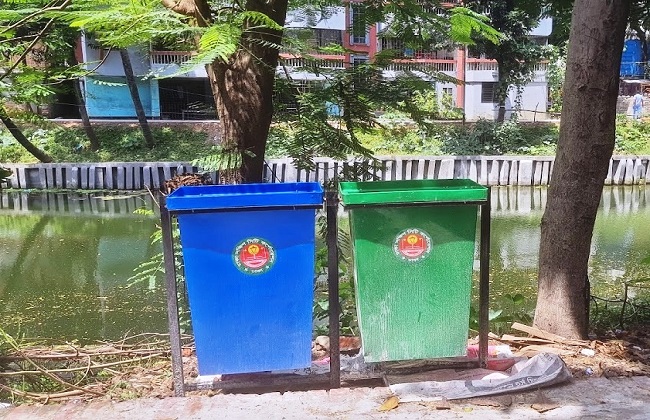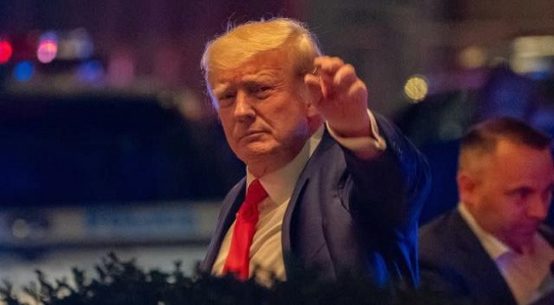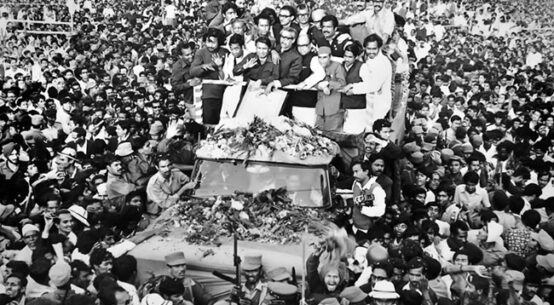
In 1978, the Bangladesh capital gained status as Dhaka Municipality Corporation, and in 1990, it became Dhaka City Corporation.
The first elected chairman was Ananda Chandra Roy. Before that, a Committee for the Improvement of Dacca (now Dhaka) was formed in 1823.
Since the 19th century, the crowded city has never stopped “improvement”, infrastructure development and beautification projects.
When we were attending schools in the 50 and 60s, Dhaka was indeed a loveable city. The city was neat and clean, like the present Rajshahi metropolitan city in northern Bangladesh. Literally a green city!
Like Rajshahi, Dhaka city was also tidy. There was discipline in traffic movement and streets, and lanes had enough street lights, where young people used to hang out sipping tea and smoking.
There were only four traffic lights. One at Sadarghat, Jinnah Avenue (now Banganadhu Avenue), Shahbagh roundabout and at New Market at Nilket.
The buses plied on time. The bus fares were fixed and quarrelling with passengers and ticket collectors (or conductors) was very rare. All passengers received a bus ticket upon payment of the bus fare.
The huge American-made Chevrolet yellow and black coloured taxi and three-wheeler auto-rickshaw (often called baby taxi) had fare meters and usually never charged extra nor cheated the passengers.
Presently the city corporation is divided in north and south. Thus, Dhaka is fortunate to have two high-profile mayors and there seems no coordination among the twin city corporation administrations. They implement dozens of ad hoc development projects under separate contractors, which is not in our discussion here.
When the Mayor moves in the city, scores of bikers accompany the SUV vehicle, as if escorting a VIP through a “troubled city”, like in Port of Prince, the capital of Haiti, where armed gangs dominate. The civil administration and law enforcement remain dormant there.
Documenting the history of the growth of the municipality to City Corporation should not take more than a few pages. To write on North and South City Corporations, it will take tons of pages to write about the suffering, pain, agony and frustration of the city dwellers.
Frankly, speaking despite Dhaka being the capital and the largest city in Bangladesh, the megapolis does not have the pomp, grandeur and charm of a capital. Sadly, it has yet to grow from a small city into a cosmopolitan capital.
Well, living in a third-world country, we can at best dream of a metropolis like neighbouring capitals and big cities in South Asia. The residents should not dare to compare Dhaka with cities in the West, Southeast Asia or even the Gulf countries.
The thematic issue of this article, promises not to bring the entire gamut of the city father’s roles and responsibilities. The articles will only focus on a particular issue – the trash bins in Dhaka. I want to further narrow it down.
The thousands of morning walkers and revellers at Dhanmondi Lake have recently seen pairs of trash bins have been placed in green and blue.
The blue and green bins placed every 100 yards for the use of walkers and revellers in the park surrounding the lake, indeed it got a new facelift.
Ten years ago, the park had dozens of green bins with lids fixed in concrete bases.
Those bins were damaged not by walkers, but by park cleaners. They dump tree leaves in the bin and set it on fire, which severely damaged the bins for use.
I may sound cynical like an argumentative resident, but my debate is elsewhere.
The bins placed on the several kilometres of the walkway in the park lack a few pertinent issues which are necessary to discuss.
First, the blue and green bins do have a sign “USE ME”. Of course, pedestrians and walkers should use the bins for throwing rubbish, waste or refuse.
The question is what rubbish they will throw in which bin. There is no advice or any instruction on how to use the blue and green bins.
Of course, smart residents know that blue means to dump recycled refuse, like plastic bottles, glass, tin and paper. While green is for other wastes, food items, kitchen waste, and tissue paper which is not recyclable and will directly go to landfill.
In brief, the green dustbin is used for wet waste and the blue dustbin is used for dry waste.
Did I not mention that there is no instruction on how to use the bins? The most alarming is the bins do have a cover. I mean, the bins are open.
In the monsoon season, with intermittent rain, the bins have become collecting points of rainwater.
There is no hole in the bottom for letting the water release from the bins.
The bins are literally a factory of mosquito larvae.
The morning and evening walkers fear of Aedes mosquito, which is causing havoc all over the country including Dhaka, which is marked by health officials as a Red Zone.
The young and old, men and women, junior and senior citizens are affected by Dengue fever, causing deaths and hospitalisation of tens of thousands.
Obviously, the question could be raised, who will slap a fine against the Dhaka South City Corporation, when the blue and green bins have been placed for farming deadly mosquitoes at a crucial moment when people are scared of the mosquito menace.
It’s City Corporation versus City Corporation! Can we expect the city corporation magistrate to slap fines against the city corporation administration?
Saleem Samad, is an award-winning independent journalist, media rights defender, a recipient of the Ashoka Fellowship and Hellman-Hammett Award. He could be reached at <saleemsamad@hotmail.com>; Twitter @saleemsamad


